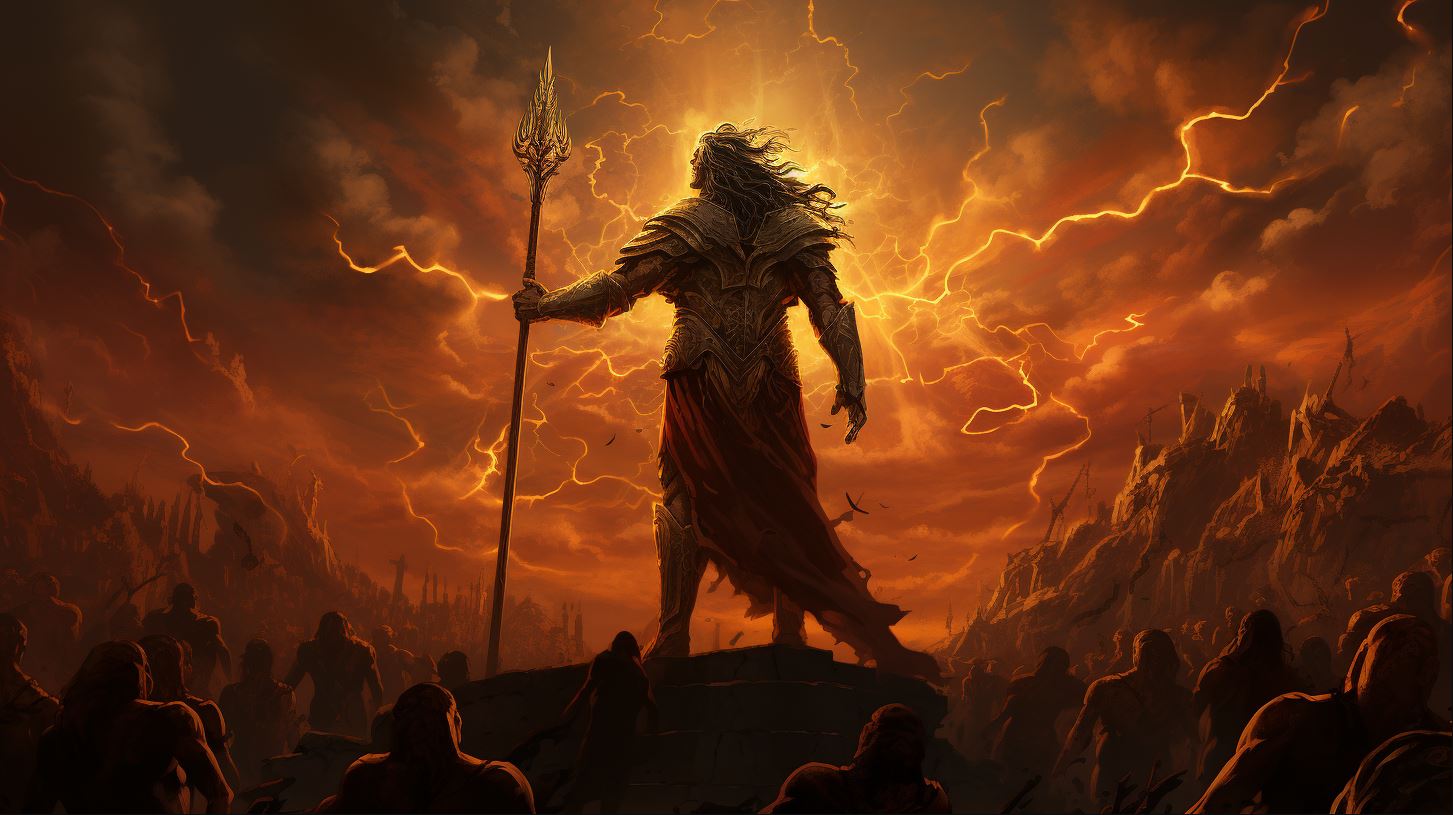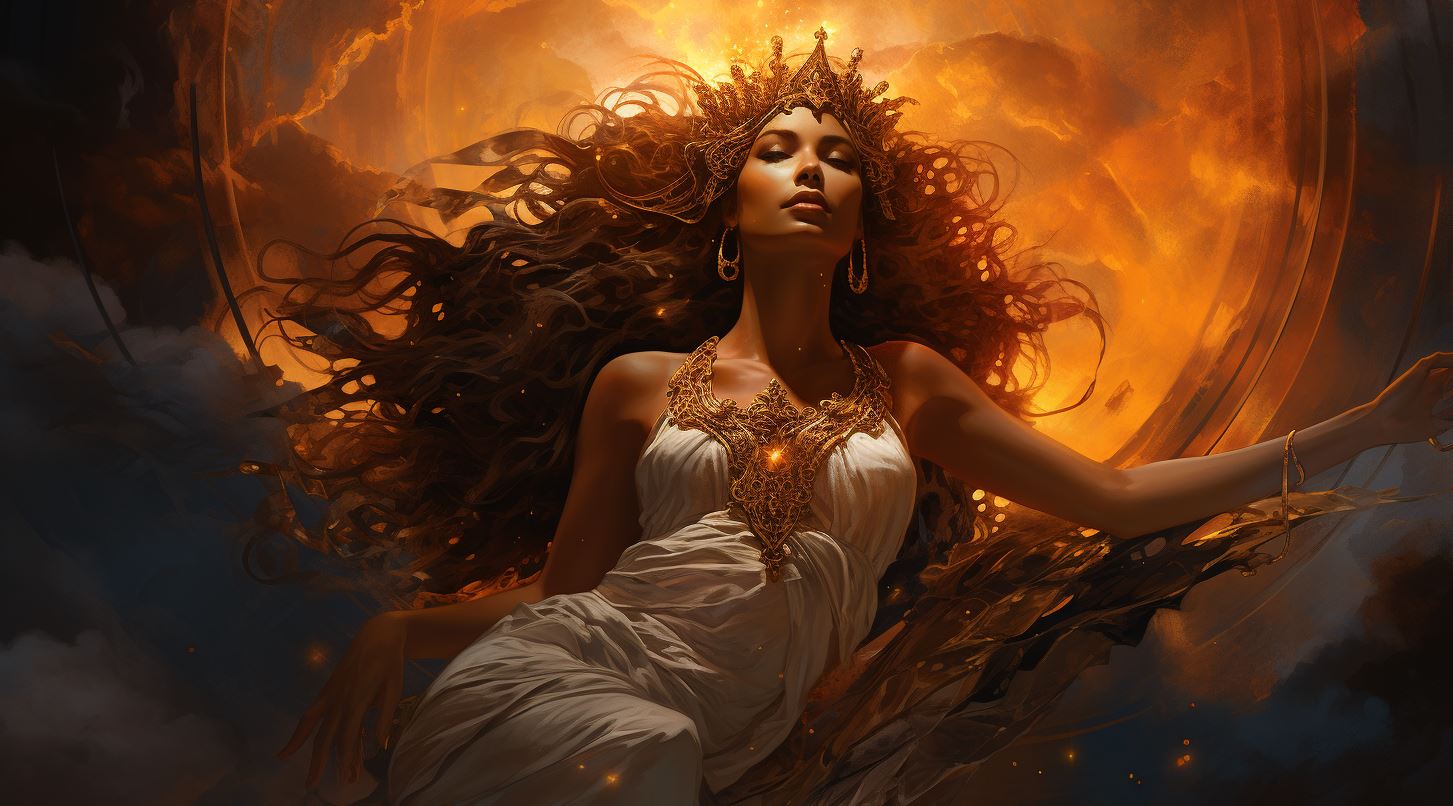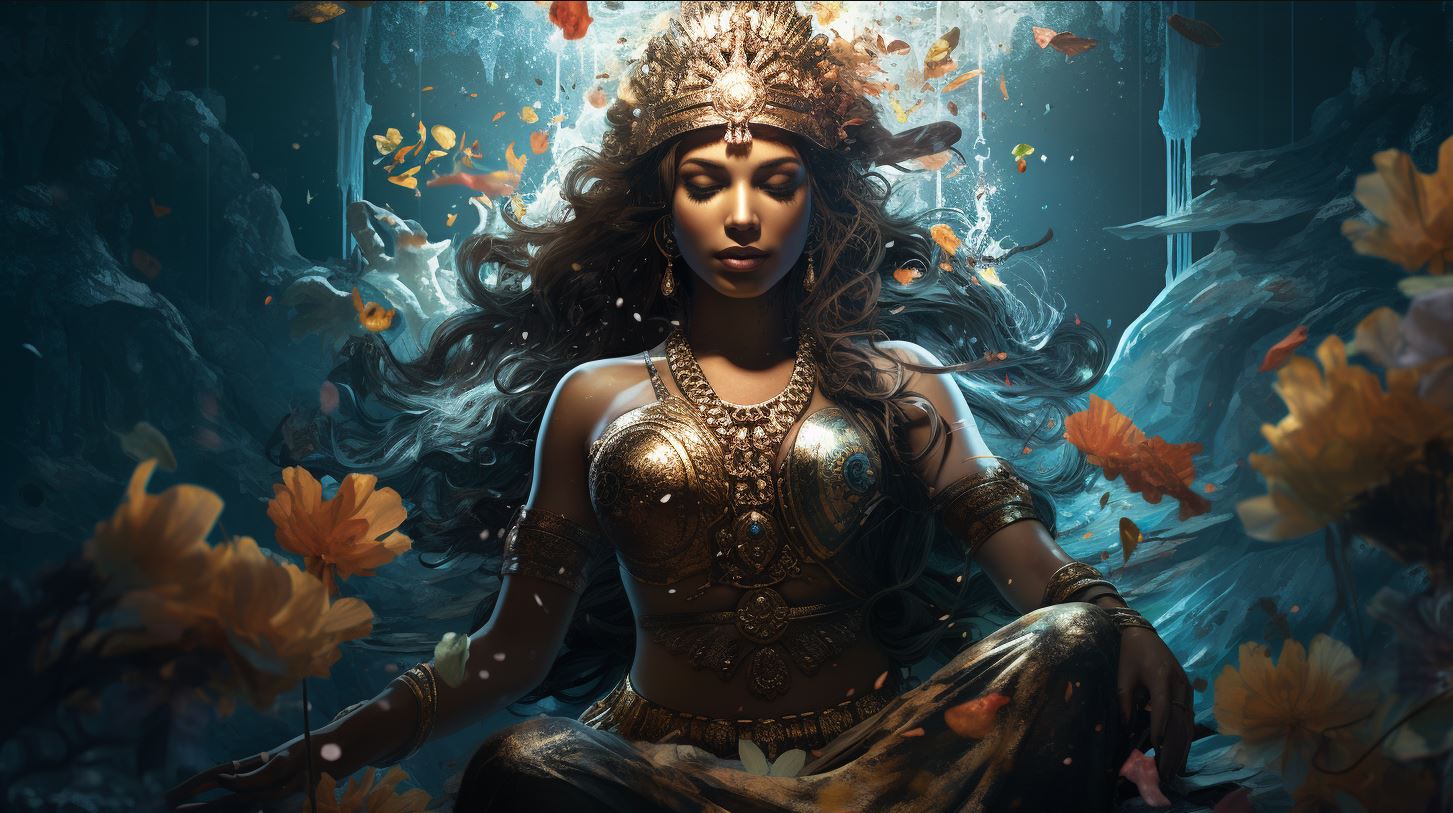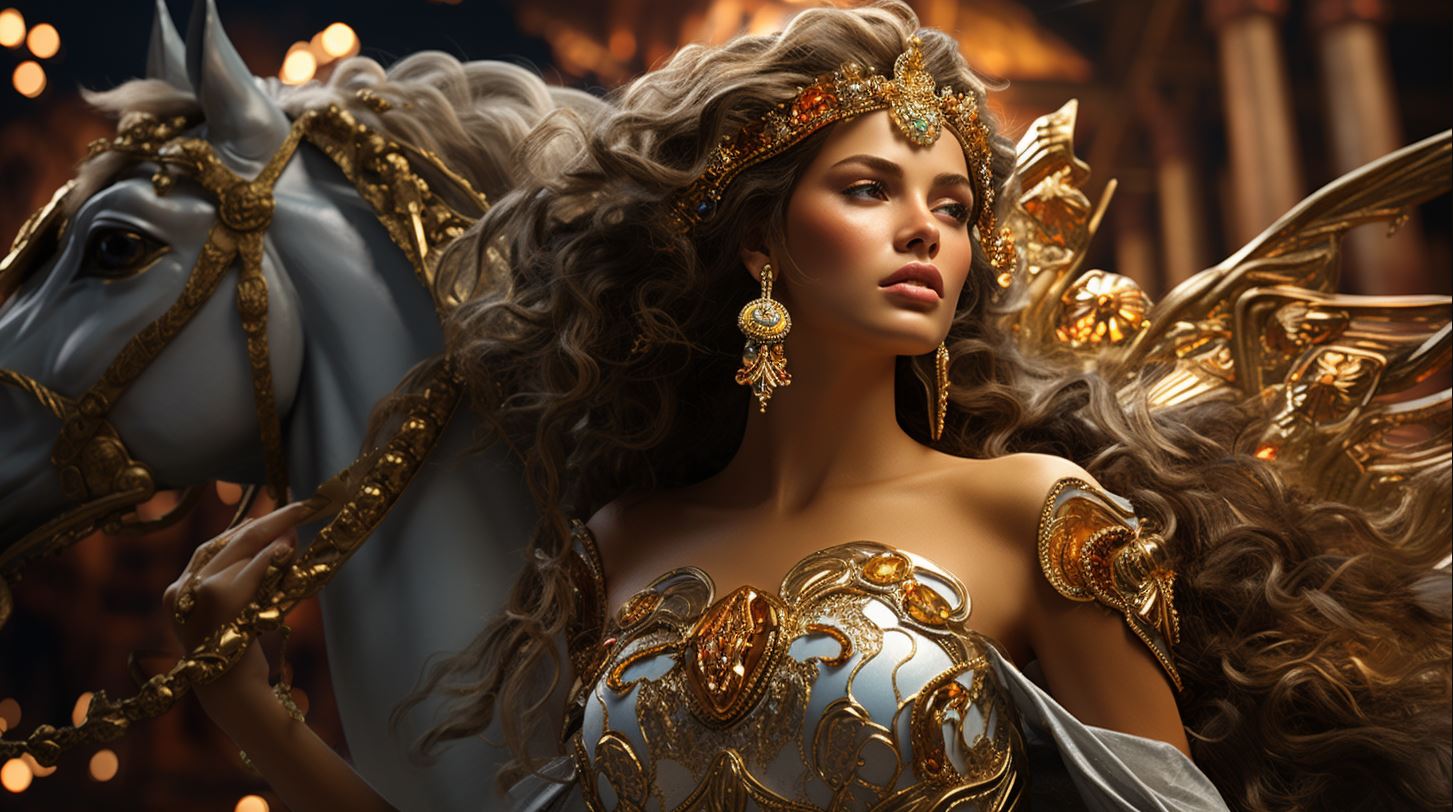Amesha Spentas: Unveiling the Divine Beings that Illuminate American Spirituality

Amesha Spentas, essential divine beings in Zoroastrianism, hold a significant place in American spirituality. Originating from ancient Persian beliefs, these seven distinct entities embody virtues such as truth, righteousness, and immortality.
Symbolized in various forms and associated with elements, days, and months, they feature prominently in religious texts, including the Avestan texts and Yasna Haptanghaiti. Amesha Spentas’ teachings, rituals, and interpretations continue to shape modern Zoroastrianism, impacting spiritual practices and beliefs within the American context.
Join us as we explore the depth and influence of Amesha Spentas in this comprehensive article.
Understanding Amesha Spentas in Zoroastrianism
In the realm of Zoroastrianism, the concept of Amesha Spentas holds great significance. These divine beings embody various virtues and qualities essential to the faith. Let’s explore the origins and importance of Amesha Spentas, as well as dive into the overarching concept of divine beings within this ancient belief system.
Origins and Importance
The origins of Amesha Spentas can be traced back to ancient Persian beliefs, predating even the advent of Zoroastrianism. These divine entities were conceptualized as emanations of the supreme deity, Ahura Mazda.
Amesha Spentas are considered the guardians and emanations of Ahura Mazda’s various qualities, ensuring balance and harmony in the world.
Amesha Spentas hold immense importance in Zoroastrianism as they represent seven core virtues and ideals that followers aspire to embody.
These virtues include truth, righteousness, devotion, authority, wholeness, immortality, and the supreme wisdom of Ahura Mazda.
The Concept of Divine Beings
Divine beings have a rich history within Zoroastrianism, and Amesha Spentas hold a prominent position among them. These divine entities are not deities in themselves, but rather serve as intermediaries between humans and the supreme divine power.
They are revered as channels through which the followers can connect with and aspire to embody the qualities and virtues they represent.
Amesha Spentas are believed to guide and protect individuals in their spiritual journey, offering divine inspiration and assistance in their pursuit of truth, righteousness, and enlightenment.
They serve as beacons of light, illuminating the path for believers and guiding them towards a higher spiritual existence.
Understanding the origins and the concept of divine beings within Zoroastrianism is crucial to comprehending the role and significance of Amesha Spentas.
These divine entities embody the aspirations and ideals that followers strive to attain, fostering a strong spiritual connection with the divine and ensuring the harmony of the universe.
The Seven Amesha Spentas
In Zoroastrianism, the Amesha Spentas are revered as divine entities embodying various virtues and aspects of life.
Let’s explore the significance of each of these seven beings:
Vohu Manah: The Divine Spirit of Good Choice
Vohu Manah represents the power of making righteous choices and embracing good thoughts. This divine spirit encourages individuals to act in accordance with truth and righteousness, leading to a harmonious and balanced life.
Asha Vahishta: The Holy Spirit of Truth and Righteousness
Asha Vahishta embodies the principles of truth and righteousness, promoting order, justice, and moral conduct. By following the path of Asha Vahishta, individuals strive to align their actions with truth, fostering harmony and righteousness in society.
Khshathra Vairya: The Divine Authority and Dominion
Khshathra Vairya embodies the qualities of divine authority, dominion, and sovereignty. It represents the divine power to protect and maintain order. Through the recognition of Khshathra Vairya, individuals embrace their responsibilities, leading with integrity and fairness.
Spenta Armaiti: The Holy Devotion and Benevolence
Spenta Armaiti embodies the qualities of holy devotion, loving kindness, and benevolence. It inspires individuals to cultivate a deep sense of reverence and devotion towards all living beings, promoting harmony, compassion, and empathy.
Haurvatat: The Divine Wholeness and Health
Haurvatat represents the divine aspects of wholeness, health, and perfection. It encourages individuals to strive for physical, mental, and spiritual well-being, promoting balance and harmony in all aspects of life.
Ameretat: The Eternal Immortality and Longevity
Ameretat symbolizes eternal life, immortality, and longevity.
It represents the divine promise of life beyond the mortal realm and encourages individuals to embrace a virtuous and fulfilling existence, leading to spiritual growth and eternal rewards.
Ahura Mazda: The Supreme Being and Creator
Ahura Mazda, the supreme being and creator, is considered the ultimate source of wisdom, goodness, and divine power.
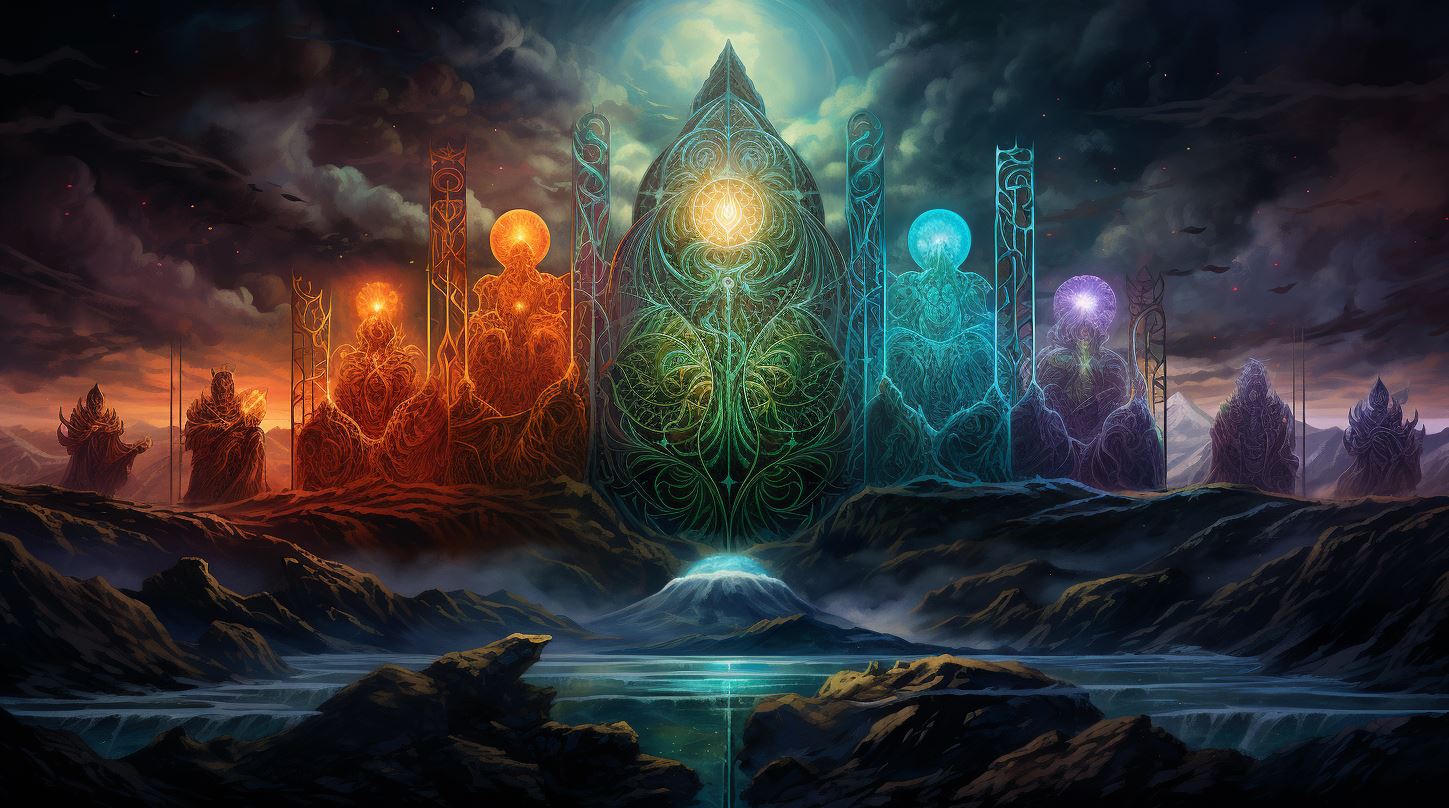
As the highest form of divinity, Ahura Mazda encompasses all the virtues and aspects represented by the Amesha Spentas, serving as the ultimate guide and protector.
By understanding and embracing the teachings and attributes of these divine beings, individuals can strive to embody these virtues in their daily lives, fostering personal growth, harmony, and spiritual enlightenment.
Symbolism and Attributes of Amesha Spentas
The symbolism and attributes associated with Amesha Spentas in Zoroastrianism are rich and diverse, reflecting their divine nature and significance. Let’s explore two key aspects: representations and iconography, as well as their association with elements, days, and months.
Representations and Iconography
Amesha Spentas are often depicted in various forms, each representing their particular virtue and divine essence. Vohu Manah, embodying good choice, is often portrayed as a handsome and wise figure, radiating tranquility and grace.
Asha Vahishta, symbolizing truth and righteousness, is depicted as a majestic figure holding a flaming torch, illuminating the path of righteousness.
Khshathra Vairya, the embodiment of divine authority and dominion, is often portrayed as a powerful and regal figure, adorned with a crown and holding a scepter.
Spenta Armaiti, representing holy devotion and benevolence, is depicted as a loving and nurturing figure, often surrounded by plants and animals.
Haurvatat, symbolizing divine wholeness and health, is depicted as a youthful and vibrant figure, radiating vitality and well-being.
Ameretat, representing eternal immortality and longevity, is often portrayed as a serene figure, emanating peace and tranquility.
Ahura Mazda, the supreme being and creator, is often depicted as a majestic figure surrounded by divine radiance and holding the divine symbol of a winged disc, representing wisdom and enlightenment.
Association with Elements, Days, and Months
Each Amesha Spenta is associated with specific elements, days of the week, and months of the year, further reinforcing their connection to the natural world and the cyclical nature of existence.
- Vohu Manah is associated with the element of metal, the day of Wednesday, and the month of January.
- Asha Vahishta is associated with fire, the day of Sunday, and the month of July.
- Khshathra Vairya is associated with water, the day of Tuesday, and the month of October.
- Spenta Armaiti is associated with earth, the day of Friday, and the month of May.
- Haurvatat is associated with plants, the day of Monday, and the month of April.
- Ameretat is associated with animals, the day of Thursday, and the month of September.
- Ahura Mazda, as the supreme being, transcends specific associations.
These associations provide a deeper understanding of the interconnectedness between the divine, the natural world, and human existence in Zoroastrianism.
Amesha Spentas in Religious Texts
Amesha Spentas, the divine entities of Zoroastrianism, hold profound significance in religious texts and scriptures. These texts provide insights into their origins, roles, and attributes.
References in the Avestan Texts
The Avestan texts, ancient sacred scriptures of Zoroastrianism, contain numerous references to the Amesha Spentas. These texts, composed in Old Iranian language, describe the divine beings as emanations of the supreme deity Ahura Mazda.
The Amesha Spentas are praised extensively in the Gathas, the hymns composed by Zarathustra. They are depicted as benefactors of humanity, embodying qualities that lead to a prosperous and righteous life.
Other Avestan texts such as the Yashts, the Yasna, and the Vendidad, also reference the Amesha Spentas, highlighting their roles in maintaining cosmic order and justice. These texts provide detailed descriptions of their individual characteristics and their harmonious interactions.
Depictions in the Yasna Haptanghaiti
The Yasna Haptanghaiti, one of the primary liturgical texts of Zoroastrianism, presents a comprehensive depiction of the Amesha Spentas. It consists of seven chapters, each dedicated to a specific Amesha Spenta.
Vohu Manah: The Divine Spirit of Good Choice
- Vohu Manah represents the divine spirit of good thoughts, choices, and intentions.
- Associated with the element of earth, Vohu Manah encourages individuals to strive for truth and righteousness.
- A pillar of ethical living, Vohu Manah inspires individuals to make wise decisions and embrace positive values in their daily lives.
Asha Vahishta: The Holy Spirit of Truth and Righteousness
- Asha Vahishta embodies the divine principles of truth, righteousness, and cosmic order.
- Symbolizing the element of fire, Asha Vahishta promotes justice, fairness, and ethical conduct.
- Individuals are encouraged to uphold the truth, embrace righteousness, and strive for moral excellence in their actions and thoughts.
Khshathra Vairya: The Divine Authority and Dominion
- Khshathra Vairya represents divine authority, power, and dominion over the material and spiritual realms.
- Associated with the element of metal, Khshathra Vairya encourages individuals to harness their potential and exercise responsible leadership.
- It serves as a reminder of the importance of using power wisely for the betterment of oneself and the community.
Spenta Armaiti: The Holy Devotion and Benevolence
- Spenta Armaiti embodies holy devotion, piety, and benevolence.
- Associated with the element of earth, Spenta Armaiti inspires individuals to cultivate inner goodness, compassion, and care for others.
- It emphasizes the significance of selflessness, love, and harmony in relationships and society.
Haurvatat: The Divine Wholeness and Health
- Haurvatat symbolizes divine wholeness, health, and well-being.
- Associated with the element of water, Haurvatat encourages individuals to prioritize physical, mental, and spiritual wellness.
- It serves as a reminder of the interconnectedness of all aspects of life and the pursuit of balance and harmony.
Ameretat: The Eternal Immortality and Longevity
- Ameretat represents eternal immortality and longevity.
- Associated with the element of plants, Ameretat signifies the eternal life force present in nature and all living beings.
- It inspires individuals to value life and aspire towards spiritual growth, seeking everlasting existence beyond the material realm.
Ahura Mazda: The Supreme Being and Creator
- While Ahura Mazda is the supreme being and creator in Zoroastrianism, it is often considered as the seventh Amesha Spenta.
- Ahura Mazda embodies wisdom, divine knowledge, and ultimate cosmic order.
- As the all-knowing and benevolent deity, Ahura Mazda is revered as the source of all truth, justice, and goodness.
Through the Avestan texts and the Yasna Haptanghaiti, we gain a deep understanding of the traditions, symbolism, and profound meaning associated with the divine beings of Amesha Spentas in Zoroastrianism.
Influence of Amesha Spentas in Zoroastrian Tradition
Teachings and Beliefs
The influence of Amesha Spentas in Zoroastrian tradition is profound, shaping the teachings and beliefs of followers. These divine beings are considered manifestations of Ahura Mazda, embodying virtues such as good choices, truth, righteousness, divine authority, devotion, wholeness, health, and immortality.
They serve as role models for Zoroastrians, guiding them towards a virtuous and purposeful life.
The teachings associated with Amesha Spentas emphasize the importance of upholding these virtues in daily life.
Zoroastrians believe that by following the examples set by these divine beings, they can align themselves with the cosmic order and contribute positively to the world. The principles of truth, righteousness, and good choices are seen as essential for creating harmonious relationships and promoting social justice.
Key Beliefs:
- Virtues as essential guiding principles
- Alignment with cosmic order through emulation
- Promotion of harmonious relationships and social justice
The teachings of Amesha Spentas also encompass the idea of dualism, where individuals are encouraged to choose the path of righteousness and resist evil.
This belief in the ongoing battle between good and evil underscores the significance of embracing the divine virtues represented by these entities.
Resisting Evil and Choosing Good:
- Embracing righteousness as a personal responsibility
- Recognition of ongoing battle between good and evil
- Striving for a virtuous and purposeful life
Practices and Rituals
In addition to their teachings and beliefs, Amesha Spentas also influence the rituals and practices observed by Zoroastrians. These rituals aim to cultivate a closer connection with these divine beings and seek their divine intervention in various aspects of life.
One such practice is the recitation of daily prayers known as Yasna, where followers offer praise and express gratitude to the Amesha Spentas. These prayers serve as a means of seeking divine guidance, blessings, and protection.
Another important ritual is the celebration of festivals that honor the individual Amesha Spenta entities. These occasions provide opportunities for Zoroastrians to come together as a community, reaffirm their faith, and deepen their understanding of the divine virtues represented by each entity.
Key Practices and Rituals:
- Recitation of daily prayers, expressing gratitude and seeking guidance
- Celebration of festivals dedicated to individual Amesha Spentas
- Community gatherings to reaffirm faith and deepen understanding
Zoroastrians also engage in acts of charity and selflessness as a way of embodying the virtues of the Amesha Spentas in their daily lives.
The practice of helping others, both within the Zoroastrian community and beyond, is seen as a manifestation of devotion and benevolence.
Overall, the influence of Amesha Spentas in Zoroastrian tradition extends beyond beliefs and teachings and permeates into the lives of followers through rituals, practices, and acts of kindness.
Their divine virtues continue to inspire and guide individuals in their pursuit of a meaningful and principled existence.
Note: This text is based on the given instructions and the general knowledge of Amesha Spentas in Zoroastrian tradition.
Contemporary Perspectives on Amesha Spentas
The interpretations of Amesha Spentas in modern Zoroastrianism provide valuable insights into their significance and relevance in today’s spiritual landscape. These divine beings continue to inspire and guide followers, shaping their beliefs and practices.
Interpretations in Modern Zoroastrianism
In modern Zoroastrianism, interpretations of Amesha Spentas focus on their embodiment of virtues and their role as guides towards spiritual growth and enlightenment. Each Amesha Spenta represents a specific aspect of virtuous living, guiding individuals towards a harmonious and meaningful life.
Zoroastrians interpret Vohu Manah as the divine spirit of making good choices, encouraging followers to prioritize ethical decision-making and thoughtful actions. Asha Vahishta is seen as the embodiment of truth and righteousness, guiding individuals towards leading honest and just lives.
Khshathra Vairya symbolizes divine authority and dominion, inspiring followers to embrace leadership roles and contribute positively to society. Spenta Armaiti represents holy devotion and benevolence, encouraging individuals to cultivate compassion and selflessness in their interactions with others.
Haurvatat embodies divine wholeness and health, guiding individuals towards physical, mental, and spiritual well-being. Ameretat, the divine spirit of eternal immortality and longevity, emphasizes the importance of embracing the eternal aspects of life and seeking spiritual enlightenment.
Ahura Mazda, the supreme being and creator, is revered as the embodiment of wisdom, goodness, and divine light. Followers view Ahura Mazda as the ultimate source of guidance and strive to align their lives with the divine principles represented by the Amesha Spentas.
Impact on Spirituality and Religious Life
The influence of Amesha Spentas extends beyond Zoroastrianism, impacting spirituality and religious life in various ways. Their teachings and virtues have resonated with individuals seeking a more holistic approach to spirituality and moral living.
By emphasizing values such as truth, righteousness, and benevolence, the Amesha Spentas provide a framework for individuals of all backgrounds to cultivate virtuous qualities in their daily lives. Their embodiment of divine attributes serves as an inspiration for personal growth and self-improvement.
The rituals and practices associated with Amesha Spentas foster a sense of community and connection among Zoroastrians. They provide opportunities for reflection, prayer, and the cultivation of virtues, reinforcing a shared commitment to the divine principles represented by these beings.
Moreover, Amesha Spentas have influenced interfaith dialogues, as their universal values resonate with individuals from different religious backgrounds. The concepts of truth, righteousness, and compassion embodied by the Amesha Spentas serve as common ground for fostering understanding and cooperation among diverse spiritual communities.
In summary, the interpretations and impact of Amesha Spentas in modern Zoroastrianism nurture virtuous living, inspire personal growth, foster community, and facilitate interfaith dialogue. As individuals continue to seek spiritual fulfillment and moral guidance in the 21st century, the timeless wisdom of Amesha Spentas remains relevant, illuminating paths towards a meaningful and enlightened life.
.











